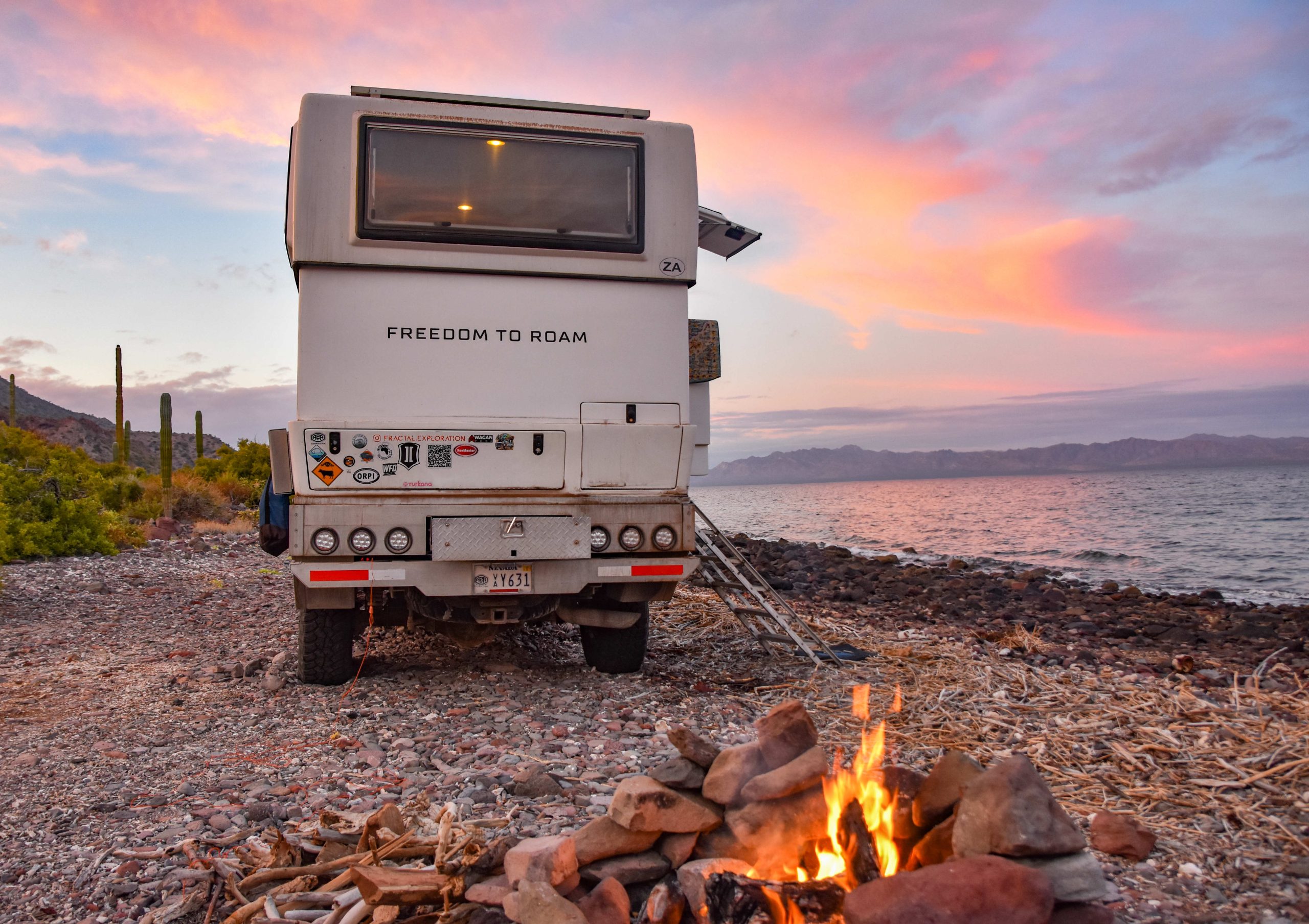“We all eat, and it would be a sad waste of opportunity to eat badly.” –Anna Thomas
“One cannot think well, love well, sleep well if one has not dined well.” –Virginia Woolf
There are two comforts that I refuse to give up when on the road: my down duvets and regular gratifying meals (and not leaving my bed before 8:00 a.m). For me, a delicious meal is an occasion that can unite family and embrace new friends. I know several overlanders who consume pasta daily and only light a fire a handful of times when traveling globally (I am talking to you, Europeans). Although this basic meal might save you time and money, it does nothing to motivate and inspire you. Food is our one true and constant luxury, having sacrificed so many others.

The simple task of cooking a wholesome meal can be significantly more challenging when on the road than in your kitchen back home. Preparing for and equipping yourself can make the difference between loving or loathing cooking outdoors, and your setup requires careful consideration, whether for the weekend or an extended journey.
Travel Style and Kitchen Setup
It certainly helps to modify your camp kitchen to suit your travel style, whether you are an omnivore, carnivore, juicing enthusiast, vegan, vegetarian, or flexitarian. And at times, you will need to adapt your expectations and learn that tofu will not be readily available in some countries, that it’s frowned upon to eat meat in some communities, or that purchasing juice directly from the locals is more economical than lugging around your power-hungry juicer. Preparation is the key.

Your kitchen setup will determine the meals you can prepare on the road. Whichever configuration you currently have, specific techniques can make your experience more satisfying and make cooking more enjoyable, especially if you are not in the habit of dining out on the regular. A rooftop tent can act as an awning while you prepare your meals from a pull-out drawer system, or a carefully designed nook in your camper allows you to have the ability to cook inside and away from the elements.
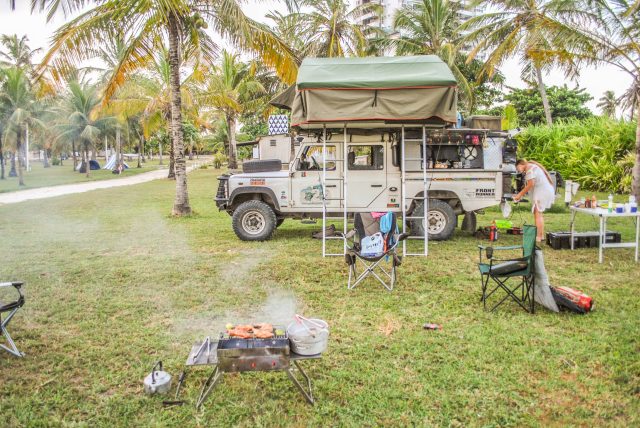
As a South African family, we tend to cook over coals regularly. Nothing beats watching the sunset over a beautiful landscape with a roaring fire. A propane or dual-fuel stove is an excellent option for those not inclined to barbeque. The latter can be a contentious topic, and I suggest you try before buying. Propane tanks can be refilled in most countries, but you should purchase adapters for filling abroad. We have used all possible methods of stovetop cooking over the past decade, and propane is still the most reliable. Ensure you have a screw-in topper for your gas tank if kept outdoors and a carbon monoxide alarm for indoors.
Fresh Food
If your food spoils, it could mean the end of your camping trip or another trip to the grocer, which could be a day-long journey. When traveling in the winter and the temperatures hover around freezing, keeping your perishables in an outside locker area frees up space inside your rig, allowing you to bring along more winter gear. If traveling in the summer, preserve fruit and vegetables in a cool place out of the sun. You can keep your drinks, delicate fruit and veggies, and ice in a cooler bag (safe and secure). If traveling long-term, a cooler simply will not do. Whether you choose to have a fridge/freezer combo depends on your needs and if you plan to travel off-grid, but a suitable fridge is usually sufficient.

I’ll state the obvious, but having access to clean water while driving is critical. In addition to using it for yourself, your children, or your pet, you can also use it to wash your hands or cool your vehicle when it overheats.
Packaging
The amount of packaging food comes in always surprises me, especially in industrialized countries. All that packaging takes up ample space. When grocery shopping, I repack most of the meats into ziplock bags, remove any apparent convoluted packaging from items in the parking lot, and discard it at the store—minimizing filling my small and compact garbage receptacle. It’s also another reason to buy locally.
It is also essential to consider how you will access fresh water. Reusing 1-gallon plastic containers for refilling with fresh water from a purification plant or outside a store can be a great way to reduce waste and minimize the amount of space taken up by water containers. Additionally, responsibly planning how to dispose of graywater is essential, especially in areas where dumping graywater is not permitted.
The following are a few tried and tested meal options.
Breakfast
Breakfast is generally considered the most important meal of the day and for a good reason. A nutritious breakfast can give you the energy to start your day, but a cup of coffee will do for some. When you’re camping, deciding whether to grab a quick yogurt or prepare a full English breakfast depends on whether you want to stay in camp for another day. Time is often of the essence, so consider whether a full day of traveling or the check-out time of a campground will affect your choice. Alternatively, quickly bake a quiche, breakfast muffins, or scones in your Omnia oven—it won’t take more than 20 minutes, and the Omnia is straightforward to clean and transport.

Sometimes it makes sense to brew coffee while packing camp, fill a flask or heated mug with hot cocoa, tea, or cappuccino (milk frothed with a hand-held frother), and pack some fruit and yogurt before heading out. A snack bag full of healthy and delicious snacks will satisfy the peckish between meals.
Some quick breakfast ideas are:
– Pancakes or flapjacks
– Granola jar with yogurt, fruit, and chia seeds
– French toast with bacon and maple syrup
– Breakfast burrito (that can be made as a lunch burrito, too)
– Instant or overnight oatmeal with fruit
Lunch
Lunchtime can be an excellent opportunity to take a break from driving or exploring and enjoy a satisfying meal. However, it is essential to consider the time necessary to prepare and eat your lunch and plan accordingly. We have found that in most areas, you will likely find a tienda or road stall, neighborhood shop, or bakery that can satisfy your hunger and provide a unique food experience. Remember that buying from a local market is better for a community’s economy and typically offers the freshest and best-quality produce.
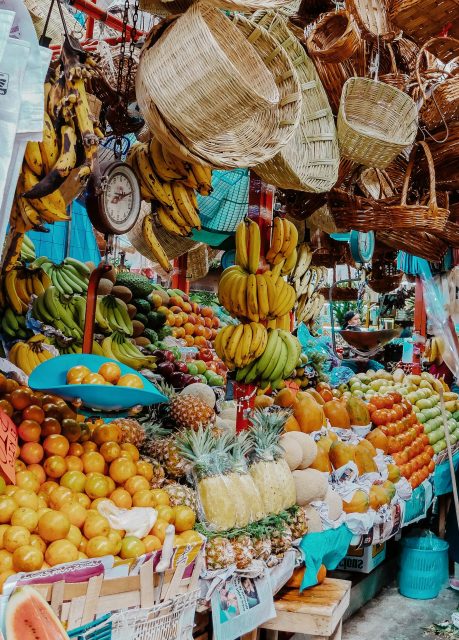
We generally limit our daily calorie intake to two meals and snack on fruit and nuts while driving.
We have an early lunch and, when possible, use the leftovers to make a healthy dinner. For example, in many parts of Latin America and Africa, rotisserie chickens and other delicious pre-cooked meals are available at roadside food stalls. Adding leftover chicken to a salad is an easy and healthy way to make a quick, light, and satisfying dinner. This is also a great way to save money and reduce food waste.
Dinner
When dinner comes around, we always make more food than required. Sometimes a fellow traveler will arrive to chat at dinnertime, and we can then offer them a meal, or it minimizes our need to stop for lunch the following day.
One-pot meals are my favorite. They are quick to prepare with minimal cleaning, and stews, soups, or pasta sauces can be prepared with little effort.
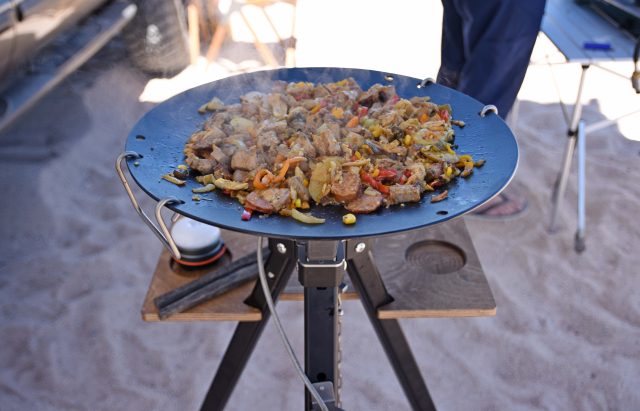
Barbequing, as mentioned, is a family favorite and a versatile way to prepare a whole assortment of meals, such as pizza, kebabs, cheese toasties, frittatas, and grilled vegetables; the options are endless.
Some quick dinner ideas are:
– Chili
– Basil pesto pasta
– Souvlaki
– Tortilla wraps can be filled with anything you have on hand, making them a versatile and easy option for dinner.

In an emergency, or if we get to camp late at night and are too exhausted to cook, we carry Good To-Go hydrated meals. You can enjoy a healthy and delicious meal in 15 minutes with just a little cup of hot water.
When cooking outdoors, please remember to be aware of your surroundings, pick up your trash, keep rivers and streams clean, and beware of stray dogs, bears, and other critters which may be attracted to the smell of food.
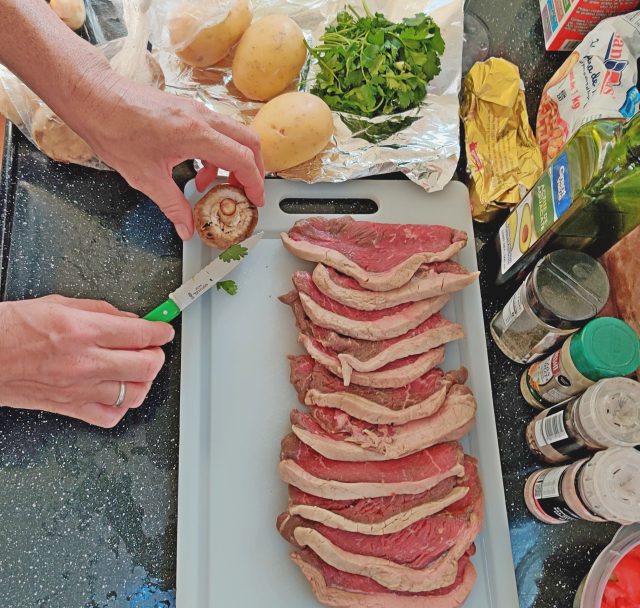
Food preparation is vital to every journey and the activity around which we all rotate. Eventually, we all establish meal routines that work for us. It is astonishing how well a traveler can eat when well-prepared and able to adapt to the available ingredients. As you travel, you would do well to observe the meals preferred by the locals and make an effort to incorporate those dishes into your own meal planning; you will eventually find that your culinary lifestyle will reflect your experiences on the road.
Our No Compromise Clause: We carefully screen all contributors to ensure they are independent and impartial. We never have and never will accept advertorial, and we do not allow advertising to influence our product or destination reviews


